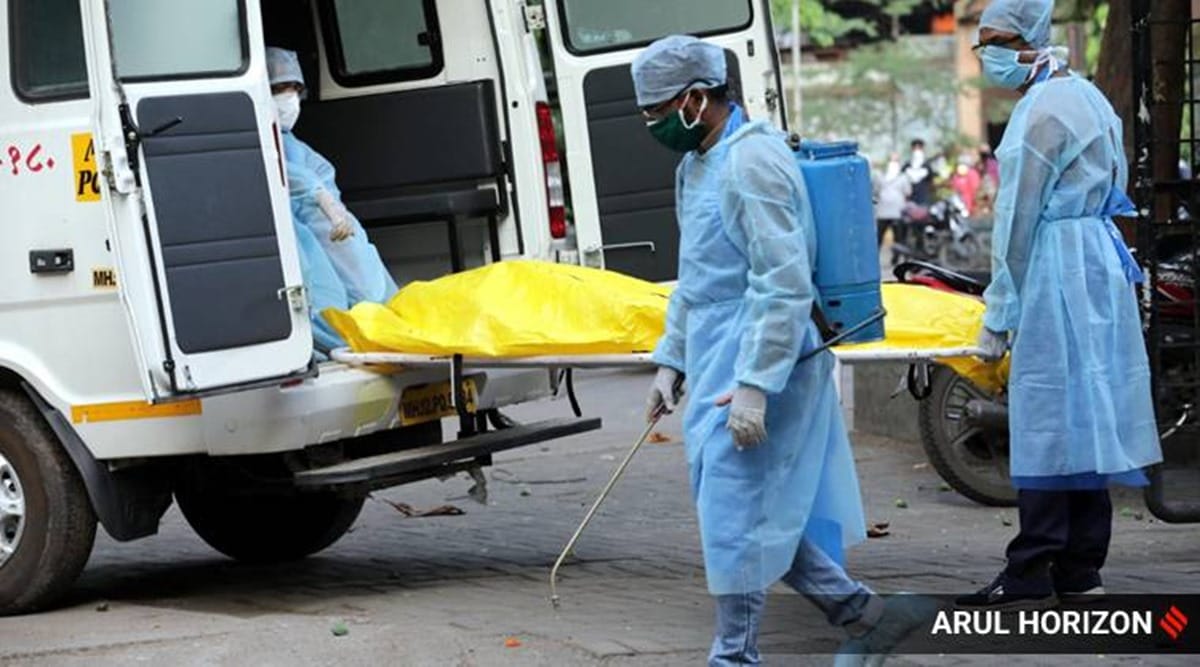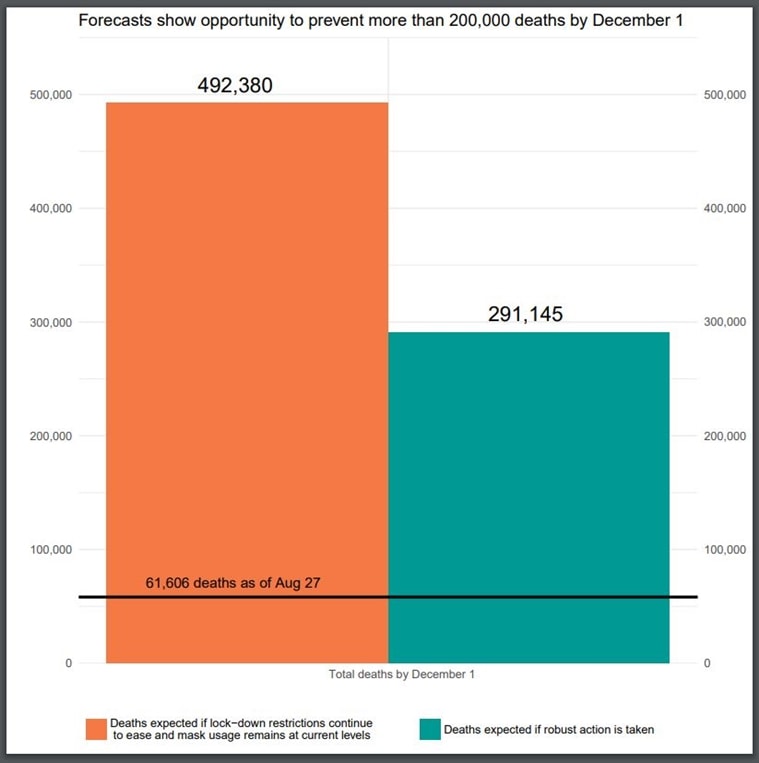 Authorities sanitize an ambulance in Pune. (Express Photo: Arul Horizon)
Authorities sanitize an ambulance in Pune. (Express Photo: Arul Horizon)A new forecast of the COVID-19 pandemic in India shows that while the disease will continue to pose a major public health threat, it may be possible to prevent more than 200,000 deaths by December 1, 2020, with widespread mask use and data-driven social distancing measures in the most affected states.
The modeling, produced by the Institute for Health Metrics and Evaluation (IHME) at the University of Washington, suggests that in the best-case scenario, India can expect approximately 291,145 total COVID-19 deaths by December 1, up from 60,000 in late August. This scenario assumes that face mask usage increases to near-universal (95 per cent) levels and that six-week, state-level lockdowns are re-imposed if the daily death rate exceeds 8 per million in the state.
This threshold is based on when governments worldwide have typically imposed lockdowns to stop COVID-19 transmission. In contrast, if lockdown restrictions continue to ease and face mask usage remains at current levels, India can expect approximately 492,380 deaths by December 1. In this scenario, 13 states would have more than 10,000 total COVID-19 deaths by that time (see table below). Currently, only Maharashtra has crossed this threshold.
“India’s epidemic is far from over as a large proportion of the population is still susceptible,” IHME Director Dr. Christopher Murray told The Indian Express. “In fact, our modeling shows there is a wide range of potential outcomes, depending on the actions that governments and individuals take today, tomorrow, and into the near future. Mask-wearing and social distancing are crucial to mitigate the spread of the virus.
“There is an opportunity to further limit the toll of COVID-19 in India by highlighting the critical need for people to comply with face mask use, social distancing, and other COVID-19 prevention guidelines as advised by public health authorities,” Dr Murray added.
India’s response to COVID-19 has produced some significant successes that highlight the opportunity to limit the pandemic’s toll in the country. In some urban areas, including Delhi, containment measures that include intensive contact tracing, widespread testing, mask-wearing, and social distancing mandates, have helped reduce the spread of the virus. In addition, COVID-19 testing in India has scaled up rapidly.
 Forecasts show opportunity to prevent more than 200,000 deaths by December 1.
Forecasts show opportunity to prevent more than 200,000 deaths by December 1.
“India is at a tipping point,” Murray said. “If hospitals in those states are unable to accommodate everyone needing COVID-19 care, the result will be more deaths and greater long-term harm to state and local economies.”
Until there is a widely available vaccine against COVID-19, much of India’s population remains susceptible to the disease. Monitoring trends state-by-state, encouraging mask use, continuing social distancing and hygiene precautions, and using state-level or district-level lockdowns if needed can help save lives and minimise the impact of the pandemic on India’s health and economy.
The Institute for Health Metrics and Evaluation (IHME) is an independent global health research organisation at the University of Washington School of Medicine that provides rigorous and comparable measurement of the world’s most important health problems and evaluates the strategies used to address them.
IHME’s projections for India are based on an epidemiological model that includes data on cases, deaths, and antibody prevalence, as well as state-specific COVID-19 testing rates, mobility, social distancing mandates, mask use, population density and age structure, and pneumonia seasonality, which shows a strong correlation with the trajectory of COVID-19.